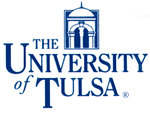The Summer Engineering Academy at The University of Tulsa for Precollege Students is scheduled for June 20th – 24th, 2011, and is for students interested in careers in electrical and mechanical engineering. This day-only, commuter academy, allows students to experience engineering through hands-on design projects, seminars, industry professional interaction, and an integrated project related to traffic crash reconstruction. The faculty of the Academy includes professors from the Electrical and Mechanical Engineering Departments at TU and local high school teachers. The Director is Professor Peter LoPresti, (918)-631-3274 or peter-lopresti@utulsa.edu.
Objectives:
The objectives of our program are:
. To make students aware of engineering career opportunities through hands-on design projects, seminars, and tours of local companies.
. To train middle school and high school teachers in engineering related activities and provide support to the teachers in implementing academy exercises within the teachers’ classroom during the regular school year.
. To attract more Oklahoma students into engineering study to help meet Oklahoma technical employer needs.
. To illustrate the need for students to develop math and science skills to tackle challenging and interesting engineering problems.
Basic Information:
. Academy dates are June 20th – June 24th, 2011
. Students entering grades 8 through 11 in the fall of 2011 can apply.
. Teacher training will occur the week prior to the Academy.
. Commuter Academy: Students are dropped off between 8am and 8:30am, students are picked up about 4:30pm.
. The application forms must be submitted by April 20th to be considered for the Academy. Forms received after that date will be put on a waiting list in the order they are received.
. Application forms can be found on the Academy website or by contacting the Academy Director, Professor Peter LoPresti (peter-lopresti@utulsa.edu or 918-631-3274).
. Sponsored by the Oklahoma State Regents for Higher Education, so there is no cost for the student to attend the Academy. A closing program open to family and friends is held on the afternoon of the 24th.
Example Activities from Past Academies:
Communication and Team Building:
The purpose of this activity was to explore the various ways that groups of people communicate and work together to arrive at a common goal. The first part of the exercise involved an ice-breaking game where the students were each given game pieces, a subset of the game rules, and basic instructions, and then had to put together the highest value hand possible. The students had to exchange information and communicate with peers, decipher conflicting rules, and plan a strategy for success.
Electric Car: The students explore the concept of resistor-capacitor (RC) circuits with respect to the application of powering an electric car. Students work in teams to build a small K’Nex car for testing purposes. The students then studied how quickly the capacitor charged through a circuit and discharged the capacitor through their car. The students then competed to see whose car would travel the farthest on a single charge.
The Wheatstone Bridge Circuit
Students will build a bridge circuit comprising two bonded strain gages and two precision resistors. The bonded strain gages will be attached to a slender aluminum bar with holes on both ends. The students will complete the circuit and use a voltmeter to measure the bridge output voltage as weight is added to the end of the bar. Thus, the students will build their own weigh scale.
Weigh a Vehicle Using a Strain Gauge
Once their Wheatstone bridge circuit is completed, the students will weigh two vehicles. The vehicles will be on a platform and suspended a couple of inches off the ground from three points. The students will be given the task to use a prewired strain gage to determine the weight on the platform. The students will be given a worksheet that guides them in determining the total weight and center of gravity location of the cars. The students will be measuring the weight with a voltmeter. These vehicles will be used in a crash test on Thursday. This activity combines both mechanical and electrical engineering concepts.
Skid Testing
Student will witness a demonstration showing the ability for a vehicle to stop. Specifically, the gravity-adjusted coefficient of friction of a vehicle will be measured. The data will be obtained by different means: an onboard accelerometer and a recording radar. The students will then measure the skid marks and predict how fast the vehicle was going at the beginning of the skid. This exercise combines concepts of distance, time, acceleration, velocity, force, work, and energy.
Crash Test Demonstration
In cooperation with the Tulsa County Fairgrounds, the students will witness a staged crash. The vehicles that the students measured and examined in the previous days will be used in the crash test. The crash will be performed by pulling a vehicle using a wire cable system into a stationary vehicle. Each vehicle will have a remote controlled pneumatic braking system. Both documentation video and high-speed video will be gathered for the students. The culminating exercise from this crash test is a competition for the students to predict the impact speed as recorded by radar. This exercise will require the students to use the weight and skid data from previous days. The reconstruction of this type of collision can be done by using the conservation of linear momentum.
Professional Presentations: Each group creates a five-minute talk about one project or theme of the academy using PowerPoint. The students are given guidelines on good presentation practices and present their talks at the closing banquet with their families and friends as an audience.
Obtain an application here

